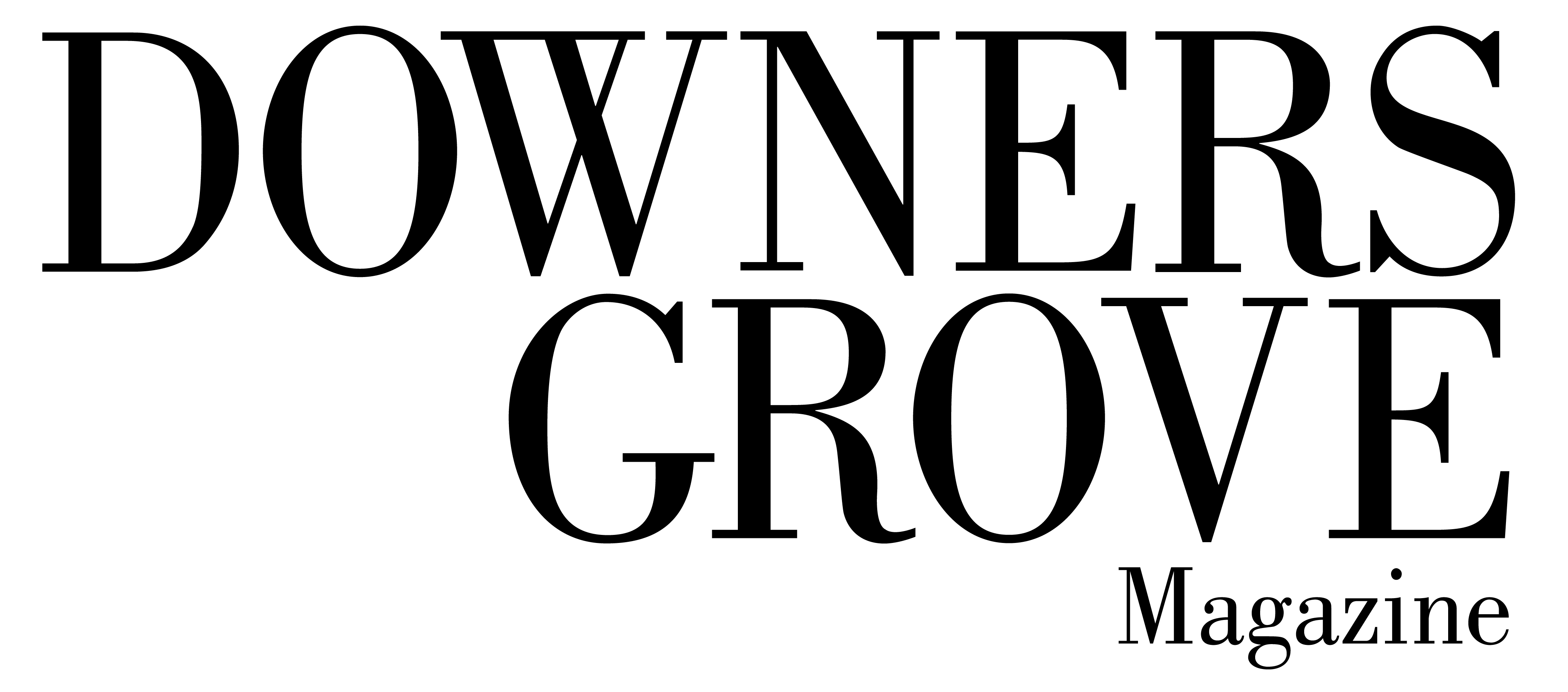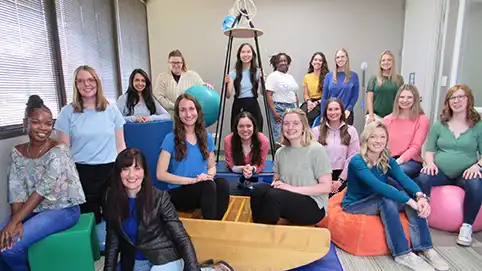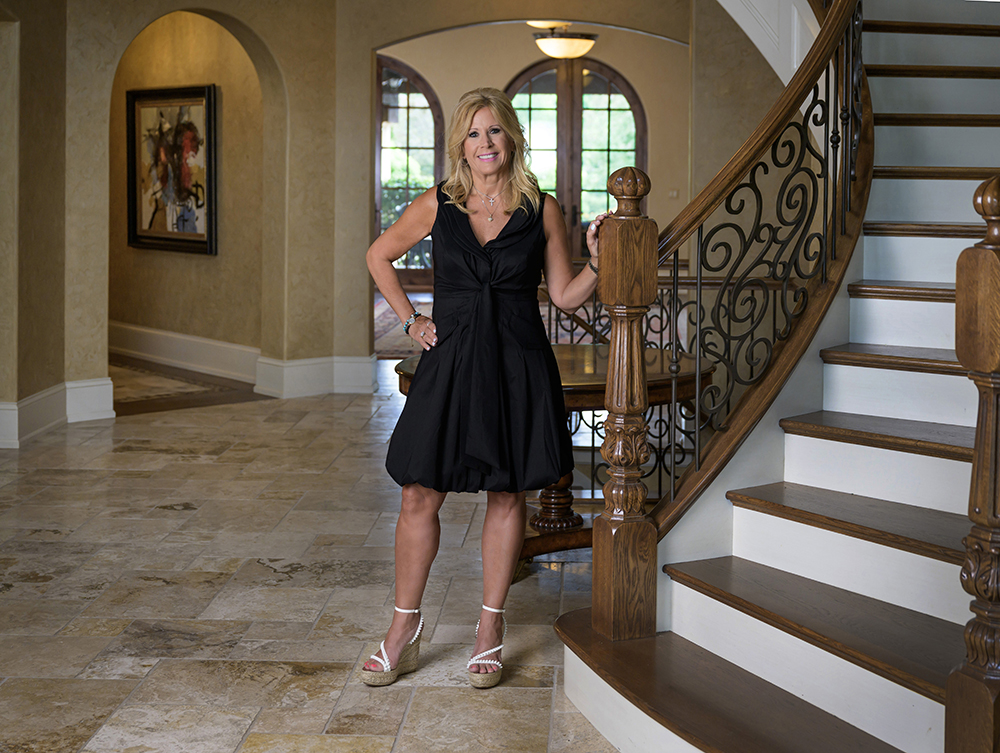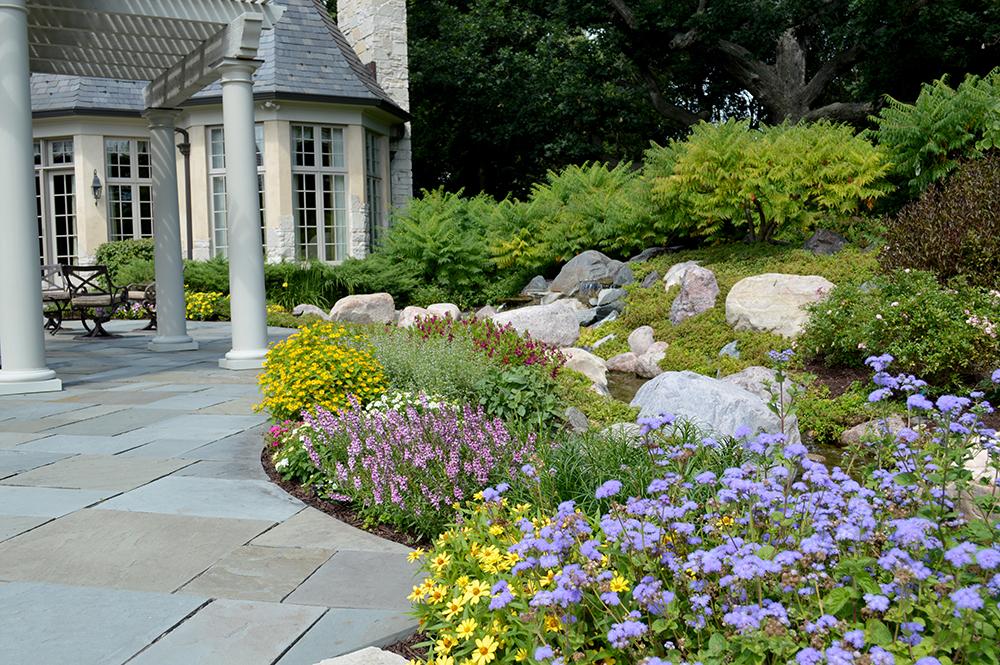White Sox Legends
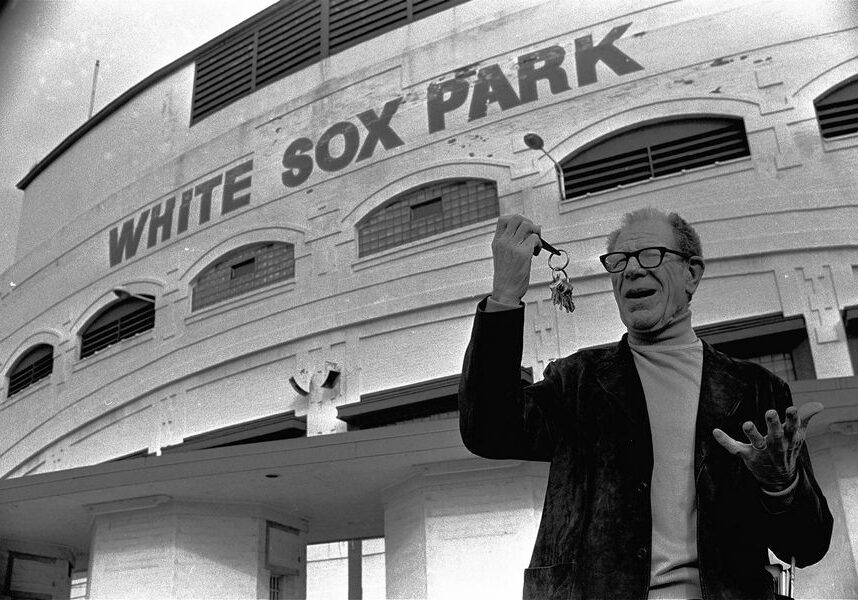
Comiskey and Veeck Family Connections to Hinsdale – Part 2
By Larry Atseff
Charley Comiskey II and Hinsdale
Charley, as his friends called him, moved with his wife, Donna Jo, to Hinsdale in 1952. They lived at 8th and South County Line Road, and eventually moved to 8th and Park. After Charley sold his share of the White Sox to Bill Veeck in 1962, he turned his complete attention to his family and to Hinsdale, itself. He and Donna Jo had four children, a girl and boy early in their marriage, and then another son and daughter, 15 years later. They all grew up in Hinsdale and attended the local schools. Charley and Donna Jo got involved in the Hinsdale community in many ways. According to one of his daughters, her father and mother were devout parishioners of St. Isaacs Jogues Church. They helped the Community House, in its early stages, develop the Christmas Ball, one of its most important fund raisers. And Charley was generous, contributing money to Hinsdale Hospital and local teams for their sporting events. “My dad also was a practical, smart businessman in many ways, and recognized opportunities,” she said. “Because of the spacing of ages with my siblings, my Dad found that getting us kids around town was a bit of a challenge.
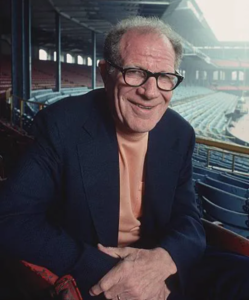
Bill Veeck during his major league days
There was no taxi service. And, not everyone had a car. Besides all that, housekeepers and babysitters, coming from Chicago to Hinsdale on the train really had no choice but to walk to the homes where they would work. Further, Hinsdaleans, travelling on business out of town, also needed limo service to O’Hare and Midway.” “So, in the mid-70’s, Charley started a taxi and limousine service, out of a building that is now Mavon Insurance at 10 Chicago Avenue in Hinsdale. He called the business Carriage Way. His daughter smiles, recalling the early days of the business when jobs were hard to get: “Young men who were recent college graduates, would show up in their fancy, expensive luxury cars for work. They would put on their green jackets and drive people around town and to the airports. It turned out to be a nice business for the entire community. She added, “By the way, the jackets were green,in honor of the family’s Irish heritage.” She also recalls how her Dad got involved in real estate development: “He developed an office building in Oak Brook. He bought a large piece of property in South Hinsdale, and developed it with a small lake so that custom homes could be built around it. He also had real estate developments in Arizona, Colorado, Wisconsin and Florida.” She added, “As a friendly, outgoing sort, and a good athlete like his grandfather, Charley joined the Hinsdale Golf Club because he was a good golfer.
Through the years he was on the board of the golf club to help improve it for his family and other members. He also joined the Hinsdale Chamber of Commerce, and eventually became Chamber president in 1976-77. Back then, with storekeepers in town, he and they collectively worked toward retaining the old-fashioned, small-town look would be good for them and the residents. She recalls they would meet regularly for lunch at places like Picadilly, and Page’s Restaurant. (Picadilly is gone, but Page’s is still in business, busy as ever.) Building codes to retain a classic architectural look were established, as were standards for signage, landscaping and lighting. Eventually, it all paid off. In May, 2006, the National Register of Historic Places designated downtown Hinsdale as a Historic Downtown, complete with signs proudly signifying the achievement. Another fond memory of her Dad was his attitude toward people, and how friendly and outgoing he was. “He set a good example for me and my brothers and sisters.” “He also had a mind like a steel trap. He remembered everybody’s names and things about them and their families. He was amazing in that way and was known for one of his favorite phrases: ‘Let me tell you a story’.” She said, “Not only was my Dad friendly and outgoing, he treated everyone the same, with respect, no matter their name or whether they had money or not. For example, when he was with the White Sox, he made it a policy that left-overs from the ballpark restaurant were always given to the homeless, whom lived near the stadium.
At his memorial service, one of them took the train out from the city to the service and told everyone how much they appreciated Charley.” Charley passed away on August 26, 2007, at age 81. His daughter is proud to remember these additional things about him: “He had 5 grand-children in the Chicago area and 2 in Florida. He loved each of them deeply as if they were his own! Grandpa attended as many basketball, baseball, and football games as he could fit into his schedule. All my children, four girls and one boy, were tremendous athletes. They had my Dad’s genes.” “The grandchildren grew up going to the Chicago White Sox games for two reasons. First, they were part of the Comiskey heritage!” “Second, when Charley owned the team, he purchased six box seats right next to the dugout on the third base side, so could be near the players. He enjoyed talking with them. To this day, my son and daughters still buy the season tickets for those same seats so we can keep the tradition of going to the Sox games alive for the next generation. My father is smiling down from heaven seeing his ten great grandchildren enjoying the Chicago White Sox, in the same seats that Comiskey’s have sat in for many generations. So, their grandfather holds a very special place in their hearts today.”
The Veecks and Hinsdale
Our story about the Veeck family and baseball and Hinsdale begins when William Veeck Sr. bought a home in Hinsdale in 1915, a year after Bill Jr. was born in Chicago. At the time, Bill Sr. was a sportswriter for the Chicago American newspaper, and, as the story goes, “he wrote a series of scathing newspaper articles on the Chicago Cubs in 1918. They grabbed PK Wrigley’s attention. Wrigley reportedly called in Veeck Sr. and said, ‘Since you seem to think you have the answers, I’ll give you a chance to see if they work.’” He appointed Veeck as vice president. He later became president and remained with the Cubs until he died in 1933. As it turns out, Veeck, Sr. is credited with helping the Cubs become a successful franchise. Along the way, he showed an ability to be promotion minded. Perhaps, we should not be surprised by all that Bill Jr. did in following him. For example, under Bill Sr., the Cubs were the first to broadcast games live on the radio. In addition, according to Hinsdale and the World, by Tom and Mary Sterling, “In 1929, (Veeck Sr.) encouraged milk consumption by having the Guernsey Farm located south of Hinsdale on Garfield deliver plenty of milk to the Cubs, a well-publicized event which greatly increased the consumption of milk didn’t really spur the team on to the World Series win they hoped for.” “In 1932, 34 Lombard boys, just a fraction of the 5,000 he treated to a Cubs game for their service as crossing guards, wrote a letter to ‘Uncle Bill’ in the newspaper thanking him for inviting them to the July 7th game. ‘It was a swell game, and we want to thank you a whole lot. We’re sure glad the Cubs won.
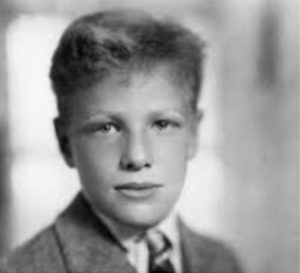
Bill Veeck during his grammar school days
The next time have us come in you might have a homerun or two saved up. Also, please tell all the ushers to stay below as they get in our way some.’” Veeck, Sr. remained president of the Cubs until his untimely death at age 56, on October 5, 1933. On his death, the Chicago American wrote that baseball fans “knew that (Bill Sr.wanted the Cubs to be winners and that he worked hard and thought hard and planned diligently to make them winners, but that he esteemed honesty and manliness and good sportsmanship above victory.” While Bill Sr. was running the Cubs, Bill Jr. was growing up from 1915 to 1935 at their Hinsdale home. As he was growing up, Bill Jr. accompanied his Dad to Cubs headquarters in summers, learning about what it was like to run a baseball team, selling everything from popcorn to tickets.. Bill Jr. grew up attending the old Garfield grammar school for all eight years. In a 1985 Hinsdale Doings article, Bill Jr. is quoted as saying. “I remember looking across from our home at Park and 7th. I saw only cornfields. I couldn’t have asked to grow up in a better town. I worked for a florist and delivered programs for the theater. I enjoyed everything, I never got bored.” Scott Jones, a schoolmate of Bill’s in his early days, recounts what it was like to be around him in two articles. On Bill Jr.’s death in January 2, 1986, Jones, recalled in a January 9th article that Bill was “a youth to be reckoned with.” In a later article in Suburban Life on June 6, 1986 Scott wrote “I first encountered Veeck in the third grade. I was quite uneasy at the thought of becoming a classmate of Veeck’s.
“Grandpa attended as many basketball, baseball, and football games as he could fit into his schedule. All my children, four girls and one boy, were tremendous athletes. They had my Dad’s genes.”
His reputation at that young age had preceded him. Growing up with him was quite an experience. Even during grade school, it didn’t take long for Veeck to establish himself as ‘that public school rowdy’”. Jones recalled, “One day he and Veeck crawled out the window during a math class to attend a Cubs ball game.” On the other hand, he also recalled in that “Veeck, exposed to literature by his father at an early age, developed a voracious appetite for books. Later in life, he often was asked to review books for the media. He gave a masterly, scholarly seminar on reading at our 50th high school reunion in 1982. There was not a book mentioned by the audience that he hadn’t read.” “In his younger days, Veeck was an excellent athlete, playing football, basketball, baseball, even swimming and tennis. Jones recalls that that “Veeck attended Philips Academy in Andover, Massachusetts, following grammar school, but he became homesick and returned to Hinsdale after several months. He played football and basketball for two years at Hinsdale High School before attending Los Alamos, New Mexico Ranch School.” Bill Jr. left Kenyon college in the middle of his sophomore year to return to again work for his Dad with the Cubs. Editor’s Note: After his Dad’s death in 1933, Bill Jr. was responsible for the ivy that graces the brick outfield walls at Wrigley field when he had it installed in 1937. According to Jones, in his youth, Bill “was a standout blocking back/linebacker for Hinsdale’s lightweight football team (under 135 pounds) and its only player not to wear a helmet-a practice allowed at that time. He earned nicknames such as ‘Steel Wool’ for his conspicuous head of red, curly hair often spotted at the bottom of pileups. That aggressive nature helped Veeck excel in basketball.

Bill Veeck, Sr.
As for the spring sports at Hinsdale, Veeck said, ‘track was the only sport I didn’t bother with. Speed was not my forte.’” “Regardless of the sport, Veeck was a star and when we were kids, he would always be elected one of the captains when sides were chosen. In baseball, the sport he was to be associated with most of his life, he was an excellent sandlot player–a southpaw and a shrewd, Nellie Fox-type hitter.” “Veeck made quite a name for himself through all of his ownership ventures in baseball—but he never forgot his roots. After the Cleveland Indians won the 1948 World Series, then owner Veeck returned to Hinsdale in February 1949, to speak to the Hinsdale Chamber of Commerce, relating baseball anecdotes to a delighted crowd.” Upon Bill’s death, Jones noted in the Hinsdale Doings, Charley Comiskey, had this to say about Bill: ‘… he was the Barnum and Bailey of the modern era. Not all of his promotions were a success. But he did draw people to the park, and he always tried to give an entertaining package. His motto was ‘Put a good product on the field and the fans will show up.’” Editor’s Note: Charley Comiskey and Bill Veeck, Jr., shared ownership of the White Sox between 1959-1961. When Jones reunited with Veeck years later, he recalls in another article, in a copy of a book on Veeck, Bill wrote, ‘To an old friend and a good one.’” Jones said, “Veeck never forgot a friend and never failed to come to the aid of a friend in need, regardless of his station in life.” He added, Bill “…marched to a different drummer in those early Hinsdale days, and he led the parade for the rest of his eventual life.” Showing his regard for Bill, in another quote, Jones said “He always the rebel, yet it was this quality–along with his colossal sense of humor–that led him to be different, to defy the establishment, to expose the phonies that pushed him to the heights of his profession.”

Perhaps Bill’s fondness in growing up in Hinsdale and playing so many sports, helped him keep an eye on Hinsdale and youth sports. In 1985, in the October 17, 1985 issue of the Hinsdale Doings, he credited Harvey Dickinson, Hinsdale Central’s football coach with getting the sports programs going in Hinsdale. “He was a good salesman. He gave that town the spark it needed.” He also opined on kids and sports. “I don’t think kids today are as dedicated as back then. In this day and age, you have so many other things that kids can put their minds to. (Remember: This was in 1985, before social media and cell phones!). About the lack of attendance at high school games: “It’s sad to see how few people show up at games today. It never used to be like that. I feel the IHSA talks a lot, but it doesn’t do anything. He said that some decisions involving high school athletes have become political but that high school sports concept is basically pure. It’s the only sport where there are amateurs. Recruiting has done some damage and changed things, but all you have to do is go to Champaign to understand why people should take more of an interest in high school sports. Mary Francis, my wife, and I have been going to the basketball finals for the last 19 years. I consider them the next best thing to the World Series.” As noted in Part 1, Bill Veeck, Jr.died on January 2, 1986, and was elected to the Baseball Hall of Fame in 1991. Another honor: he was elected to the Hinsdale Central Foundation in 2001. A very fitting local honor for Bill Sr. and Bill Jr.: Veeck Park, located on 47th Street as you enter Hinsdale from the east and cross I-294. According to an article in Suburban Life, on December 16, 1997, the Village named the field to honor both Veecks. The Veeck family and a nephew, Fred Krehbiel, made donations to build the park. Three years later, in 2000, it was opened up and is now enjoyed by many young players of several sports. Now you know why.
Credits
We have drawn from several sources for this article in two parts included are:
www.baseballhall.org/hall-of-famers/veeck-bill
Chicago Historical Society, Encyclopedia Britannica Wikipedia: Charles Finley, Chuck Finley, Michael Veeck
www.baseball-reference.com/bullpen/Bill_Veeck
The Hinsdale Historical Society also contributed copies of newspaper accounts over the years of the activities of Comiskeys and Veecks.
*Photo provided by the Baseball Hall of Fame
